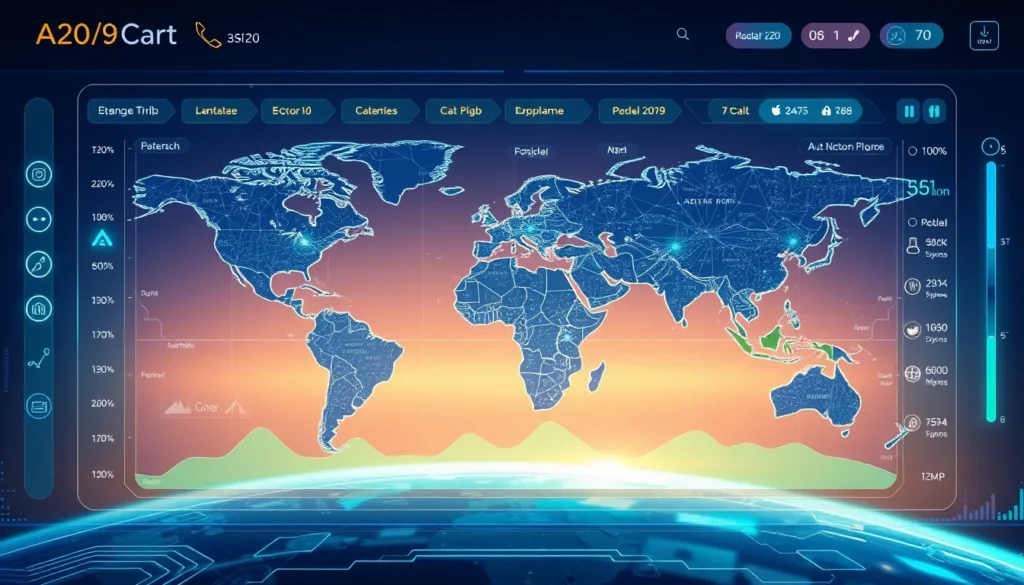Now Reading: Kumo Relational Foundation Model: Boosting Predictive AI
-
01
Kumo Relational Foundation Model: Boosting Predictive AI
Kumo Relational Foundation Model: Boosting Predictive AI

Kumo Relational Foundation Model: Boosting Predictive AI
The rapid evolution of artificial intelligence has paved the way for breakthrough innovations that challenge traditional methods. Kumo has set a new standard with its revolutionary relational foundation model. This model is designed to enhance predictive artificial intelligence by leveraging relational reasoning in ways that conventional large language models cannot. In this article, we explore the key components of Kumo’s innovative approach, its diverse applications, and the future potential of this technology in the realm of predictive analytics.
Understanding the Kumo Relational Foundation Model
At its core, the Kumo relational foundation model integrates structured data relationships into its learning process. Unlike traditional artificial intelligence systems that rely solely on statistical patterns, Kumo’s model applies relational reasoning to connect disparate data points in a unified framework. This methodology allows the system not only to interpret historical data but also to predict future outcomes with a high level of accuracy.
Key Features of Kumo’s Model:
- Relational Reasoning: The model is built on detecting relationships among data values that go beyond mere statistical correlation.
- Structured Data Integration: It combines diverse data sources to provide a comprehensive view of trends and interdependencies.
- Enhanced Forecasting: Through advanced algorithms, it sets the stage for early-warning systems and proactive decision-making.
By employing these innovative strategies, the Kumo relational foundation model is pushing the boundaries of what predictive artificial intelligence can achieve. Its ability to process and connect complex data ecosystems opens up new possibilities for industries that rely on robust analytics.
How Relational Reasoning Improves Predictive Analytics
One of the standout aspects of Kumo’s technology is its use of relational reasoning. This capability fundamentally transforms the way predictive analytics is performed. Traditional approaches often focus on individual data points in isolation. However, by understanding the relationships across data sets, Kumo’s model can unearth hidden insights that would otherwise remain obscured.
Benefits of Relational Reasoning in Predictive Analytics:
- Improved Accuracy: Recognizing interdependencies enhances the model’s ability to forecast with greater precision.
- Contextual Insights: By mapping connections between various data elements, the model generates deeper contextual understandings.
- Versatile Applications: This approach benefits several sectors—from financial risk management to healthcare diagnostics, ensuring timely interventions and informed decision-making.
The inclusion of the long-tail keyword “how relational reasoning improves predictive analytics” is a testament to the model’s targeted capabilities. By specifically addressing this advanced aspect, organizations can gain a competitive edge in planning and strategizing for future challenges.
Advanced Forecasting with Relational Data
Another significant advantage of Kumo’s approach is its emphasis on advanced forecasting. When combined with the principles of predictive artificial intelligence, the model shifts the focus from merely reacting to trends, to proactively anticipating them. The integration of relational data helps in constructing a detailed narrative of past and future events, which is crucial for industries that rely on fine-tuned predictions.
Here are some of the key benefits:
- Financial Markets: Investors benefit from early-warning systems that can detect market volatility and emerging opportunities.
- Healthcare: Early prediction of disease outbreaks or patient care requirements can be significantly improved, leading to better resource allocation and timely interventions.
- Environmental Forecasting: The model’s ability to analyze complex environmental data aids in predicting climate-related phenomena, which is vital for disaster preparedness.
Furthermore, the concept of advanced forecasting with relational data is crucial for tailoring strategies that are both proactive and adaptive. By incorporating multiple layers of information, Kumo’s model provides a more reliable basis for forecasting in various domains.
Real-World Applications and Future Prospects
The potential real-world applications of the Kumo relational foundation model are vast. From enhancing predictive artificial intelligence in business forecasting to improving early-warning systems, the impact of this technology can be seen across multiple sectors.
Recent applications include:
- Finance: Identification of market trends and risk management through interconnected data analysis.
- Healthcare Diagnostics: Leveraging complex data interrelationships to predict patient outcomes and identify potential outbreaks early.
- Public Policy: Using predictive insights to inform policy decisions and optimize resource distribution while ensuring preparedness for unforeseen events.
The model’s ability to explore structured data relationships makes it uniquely positioned to address some of the most complex problems in modern analytics. As industries begin to integrate these advanced capabilities into their operations, it is expected that the scope and scale of AI-driven insights will continue to expand. In the future, we may see further developments that will refine relational reasoning techniques, making the technology even more adaptive and self-learning.
The Road Ahead for Predictive Artificial Intelligence
In conclusion, the unveiling of the Kumo relational foundation model marks a transformative moment in the evolution of predictive artificial intelligence. By successfully integrating relational reasoning with advanced forecasting methods, Kumo is not only offering enhanced predictive accuracy but also paving the way for the next generation of AI systems. As the model continues to undergo testing and refinements, its potential applications will broaden, leading to more informed decision-making processes across industries.
As stakeholders in technology and analytics look forward to these advancements, the focus remains on ensuring that predictive AI systems like Kumo’s are scalable, secure, and ethically managed. With a strong foundation in relational data and forecasting, the future of predictive artificial intelligence is indeed promising, enabling better planning, efficient resource utilization, and ultimately, a new era of strategic insights.
By embracing transformative technologies such as the Kumo relational foundation model, businesses and organizations can harness the power of predictive analytics to navigate the complexities of tomorrow’s challenges with confidence and foresight.

























